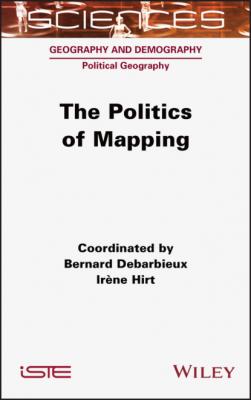The Politics of Mapping. Bernard Debarbieux
Читать онлайн.| Название | The Politics of Mapping |
|---|---|
| Автор произведения | Bernard Debarbieux |
| Жанр | География |
| Серия | |
| Издательство | География |
| Год выпуска | 0 |
| isbn | 9781119986744 |
To move in this direction, it is easy to understand that it is not by virtue of a moral leap of faith (Kant 1798, pp. 203–221) that we can move forward. It is rather a question of ethics (Spinoza 1954 [1677]; Kant 1785; Ricoeur 1990; Lévy 2021), as a compatibility of the logics of society and those of its components. It is a historical construction of values in motion by actors united by a continuous dialogue (Lévy et al. 2018). We can call the tilting point – which is in fact a slow process – an ethical turn, from which the world of transcendent injunctions, antinomies and exceptions that constitutes the moral universe gives way to the societal co-construction of values proposed and discussed by all actors.
Table 1.1 shows the differences between a moralistic approach and an ethical approach. The moralist approach is both overbearing and revealing, and consists of denouncing, through technical mastery and good intentions, the misuse of maps. Conversely, the ethical approach is much more demanding because it no longer places the cartographer in a dominant position, but as one of the players in a world that is moving in many ways. On the supply side, the possible themes and the way maps are made are changing. On the demand side, society’s expectations, the skills and practices of map consumers, and, for all of them, society’s ethical values, which have probably changed more in a century than in the whole of human history, are changing. Thus, for all actors and precisely because they are actors and not only agents, the association between freedom and responsibility becomes cardinal. Similarly, equality only makes sense if it translates into access to effective capabilities for all (Sen 2010), which means that all education must be based on an obligation to achieve results and not only on means. These elements also concern the relationship with the map, and it is understandable why cartographers cannot “give lessons” to other stakeholders in the sector.
In this framework, the properly political dimension cannot be reduced to its institutional, sociological or psychological components. Justice, which is the permanent central issue of political deliberation, is neither care, nor simple reciprocity in relations between two people, nor even negotiation between groups that do not share common values (Lévy et al. 2018). Justice is the contradictory synthetic summary of what citizens say about what is just. And if we want, moreover, to map the idea of justice, we have to go looking for what is really at stake: the equitable public redistribution of private goods, but increasingly, in contemporary societies, the co-production of public goods, such as, on the one hand, education, health, culture, nature, which have a powerful spatial component, and, on the other hand, urbanity and mobility, which are spatial realities throughout.
Table 1.1. The ethical turn (source: adapted from Lévy 2015)
| Moral | Ethical | |
| Sociality/society relationship | Antinomy | Compatibility, convergence |
| Principle | Injunction | Value |
| Status of statements | Transcendent | Self-organized |
| Creation of new statements | Dogmatic (revealed substance) | Pragmatic (substantial constructed + procedural approach) |
| Epistemology | General/personal | Singular/universal |
| Relationship with the truth | Concealment/revealment | Deconstruction/reconstruction |
| Public relations | Cognitive technocracy “I know, you don’t.” | Reflective explanation “I know, you know, we think.” |
| Social values | Domination, egalitarianism, charity. Freedom/equality antinomy | Fairness, solidarity, responsibility. Compatibility of freedom and equality |
| Relationship with universality | Proclaimed but ineffective universality | Historically constructed universality |
1.6. Mapping, citizen science
All of these elements result in much richer interactions between cartographers and the rest of society. Through its formalism, the map provides a specific perspective that influences the public debate.
For example, anyone can consult the maps of the Census Bureau, a federal government agency, which show the slow crumbling of New York ghettos, including those in Harlem, the East Village and the Lower East Side (Lévy 2014). Yet, an academic-political current had defined any change in the social composition of these neighborhoods as “gentrification” and a revenge of big capital. Today, we can see that it is the mix that has progressed, with the combination of socioethnic and socioeconomic groups approaching (but not yet reaching) the New York metropolitan area. This clarifies the debate: those who denounce gentrification in the wake of a school of thought ranging from Smith (Smith and Williams 1986) to Soja (2010), actually fear mixing because they believe that the identity of the poor must be preserved at all costs due to homogeneous inhabiting arrangements. This is a defensible political choice, but one that was obscured by the claim that increased mixing was simply impossible (Harvey 1973). Here, the map helps to make crucial experiments that can encourage ordinary citizens to enter the political arena possible and, according to the values, judgments and options they defend, propose commensurations between emergencies
